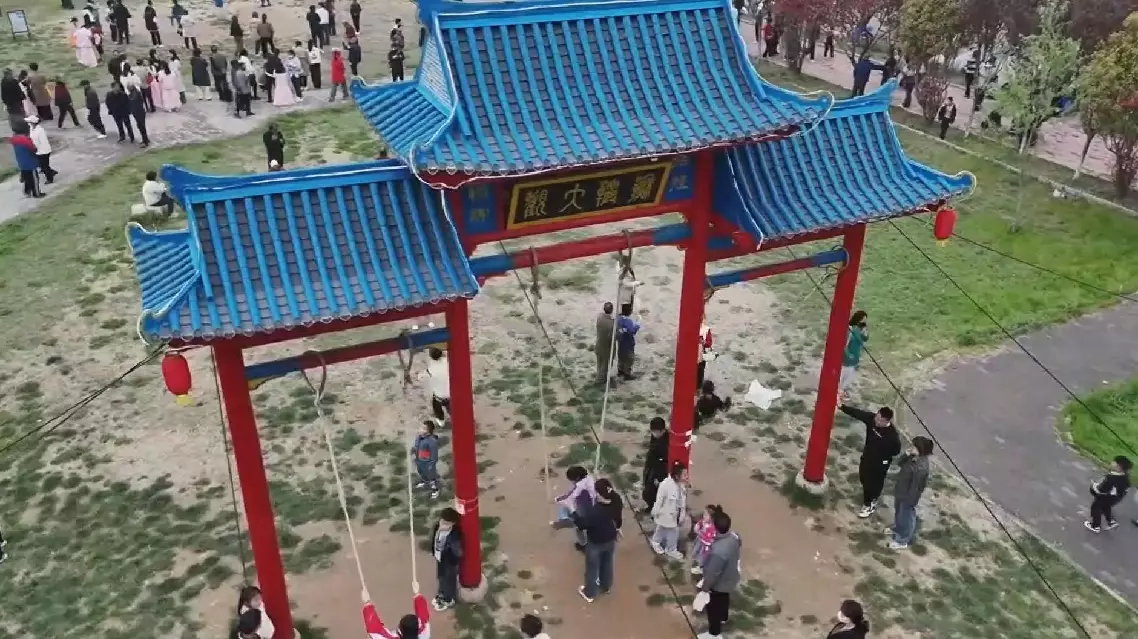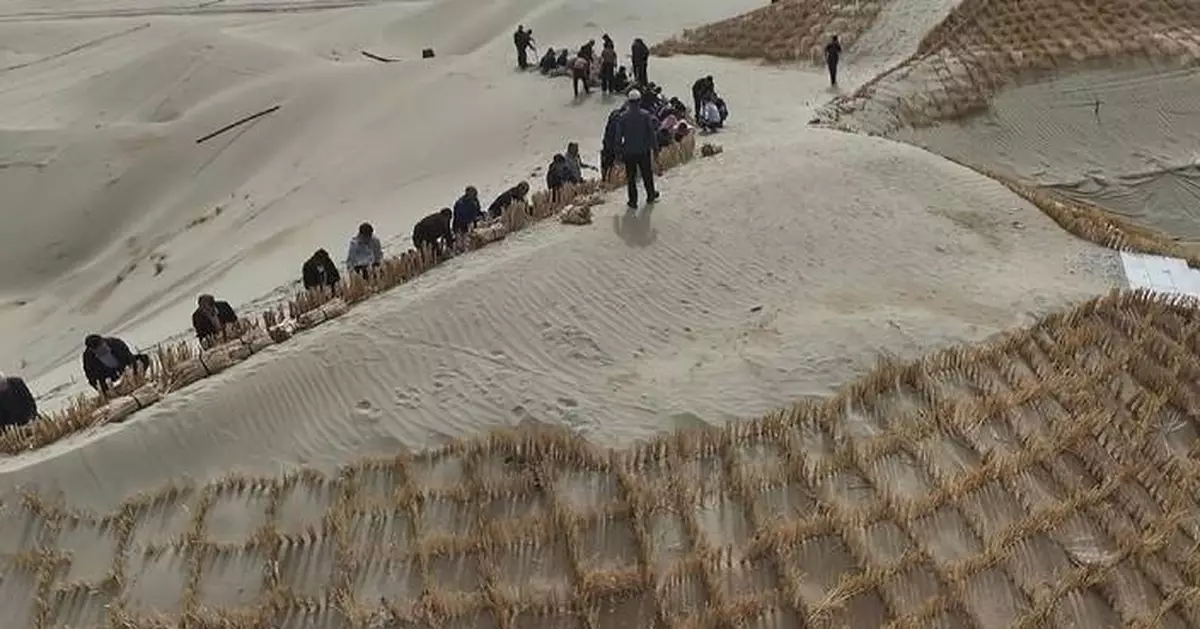Forestry scientists and officials in northwest China's Ningxia Hui Autonomous Region and Xinjiang Uygur Autonomous Region are building a "Green Great Wall" as part of the country's efforts to combat desertification.
Monday marks the World Day to Combat Desertification and Drought, and the pressing challenges of land degradation and desertification are once again gaining global attention.
China, which is among the countries facing the severest desertification, has made huge progress in curbing the expansion of deserts after decades of relentless efforts.
This is no mean feat especially in the country's northwestern region where rain is a relatively rare phenomenon.
Researchers in Yinchuan City, capital of Ningxia, say that after long-term trials they have found the most suitable plant species, namely the Prunus mongolica, to help their efforts to stop desertification in the region. The city is now home to a pilot zone, equipped with a sapling garden and a breeding center for the species.
However, this only captures part of Ningxia's efforts to combat desertification. The region also takes active part in the Three-North Shelterbelt Forest Program, a decades-old environmental campaign, which started in the late 1970s and is expected to last until 2050.
Under this program, China plans to plant billions of trees to build a “Green Great Wall" through the northwest, north and northeast regions to prevent desertification.
So far, 53 percent of desertified land in the country has been restored. As the program continues, China is expected to see more degraded land being restored.
"Since the inception of the Three-North Shelterbelt Forest Program, Ningxia's forest coverage rate has increased from 2.4 percent in 1978 to 11.35 percent, reducing the amount of sediment discharged into the Yellow River by 40 million tonnes," said Xu Zhong, deputy director with the Ningxia Forestry and Grassland Administration.
Apart from Ningxia, Xinjiang is also at the forefront of the program.
The region is home to China's biggest desert, the Taklimakan. To stop the southward expansion of the desert, people in surrounding areas are building a green belt around the sea of sand stretching over 2,700 kilometers. Efforts are still underway to fill in the last gap of 285 kilometers.
"We first insert reeds 15 centimeters into the ground to stabilize sand. In about three to four days, we plant tamarisk and saxaul saplings inside the reeds square. The reed squares will be intact even after ten years," said a forestry worker.
According to local forestry officials, using different methods to enhance the diversity, stability and sustainability of the desert ecosystem and protect the vegetation around the desert is still the focus of this year's work.

"Green Great Wall" combats desertification in northern China
As the Qingming Festival approaches this Friday, various traditional folk activities have been held across China, celebrating the rich cultural heritage of the occasion.
With a 2,500-year history, Qingming Festival, or the Festival of Pure Brightness, observed in early April, uniquely combines ancestral worship with the celebration of spring. Falling on the 15th day after the spring equinox, this ritual-rich observance reflects China's enduring values of ancestral veneration and inspires deep introspection about what gives life meaning.
In Sijia Village, Huayin City, northwest China’s Shaanxi Province, a unique swing festival is held to mark the occasion. Eighteen different types of traditional swings, such as the spinning wheel swing, the Bagua swing reminiscent of a rotating carousel, and the balance swing designed for two people, have attracted many visitors.
Historically, Sijia Village served as a military post guarding the strategic Tongguan pass, a former mountain pass and fortress located south of the confluence of the Wei and Yellow Rivers. The swing tradition in the village has its origins in military training exercises like climbing and river crossing. The local swing culture further developed as regional trade flourished, eventually evolving into the "swing festival" that continues today.
"It's very exciting and tests your skill, endurance, and most importantly, your arm strength. You need to maintain balance," said Qu Xiangyang, a visitor.
In Rudong County, Nantong City, east China's Jiangsu Province, another traditional Qingming activity takes place - kite flying.
Flying kites as a way of making wishes is an age-old Qingming custom in this region. As a result, the Qingming Festival in Nantong is also known as the "Kite Festival."
The local Banyao whistling kite making skills is listed as one of the first national intangible cultural heritage items.
According to a folk culture expert, people traditionally write the names of diseases or misfortunes on paper, attach it to a kite, and release it into the sky. This practice is believed to drive away illness and disaster, while also serving as a way to make wishes.
In south China's Guangdong Province, a large tug-of-war competition is underway in Maoming City. Teams from different towns and streets are competing, attracting many locals to cheer on their teams.
Tug-of-war, which originated during the late Spring and Autumn period (770 BC - 476 BC), became part of Qingming customs during the Tang Dynasty (618-907). Emperor Xuanzong of the Tang Dynasty once organized large-scale tug-of-war competitions for the festival.
"Tug-of-war became very popular in the Tang Dynasty, even emerging as the national sport. It originated in the Jingchu region and later spread across the country. In ancient Lingnan (Southern China), tug-of-war games were a common tradition. Through these events, people seek to pray for peace, prosperity, and abundant harvests," said Yao Guojun, vice dean of the College of Arts and Law, Guangdong University of Petrochemical Technology.

Traditional folk activities held for Qingming Festival


















































